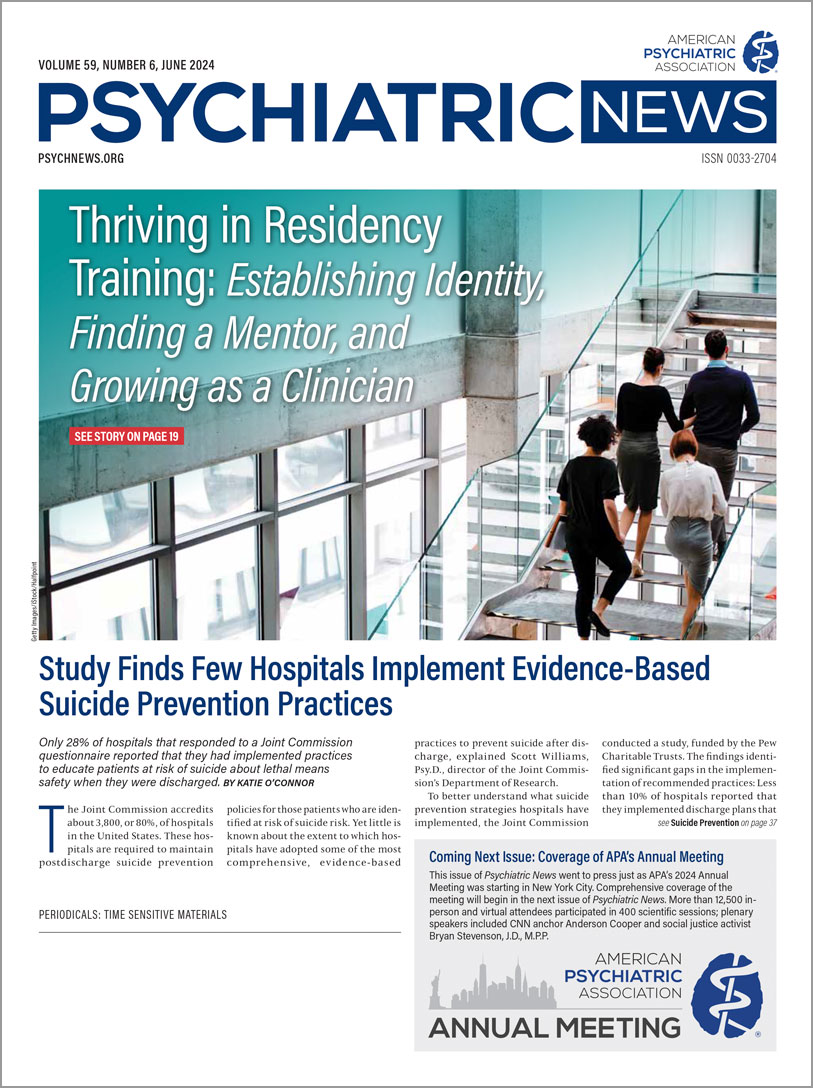Frequent cannabis use may raise the risk of heart attack and stroke, a
study in the
Journal of the American Heart Association has found.
“When controlling for tobacco use within adults, cannabis use has an independent association with heart attacks and stroke, with more days of use per month associated with greater risk,” lead author Abra Jeffers, Ph.D., M.S., M.Phil., a data analyst at Massachusetts General Hospital, told Psychiatric News. “Among adults who had never used tobacco cigarettes, there remained a strong association between cannabis use and heart attacks and stroke that was about the same magnitude [as] tobacco use.”
Jeffers and colleagues examined data from the Behavioral Risk Factor Surveillance Survey (BRFSS) between 2016 and 2020. The BRFSS is an annual telephone survey of adults in which participants report on their health behaviors and whether health care professionals had ever diagnosed them with a health condition. Jeffers and colleagues drew data from 434,104 adults aged 18 to 74 years (mean age 45.4 years) across 27 states and two territories to assess the association of cannabis use with self-reported cardiovascular outcomes.
In the BRFSS, participants were asked how often they had used cannabis in the previous 30 days and whether they had any diagnoses of coronary heart disease or angina, myocardial infarction (heart attack), or stroke. Jeffers and colleagues adjusted for tobacco use and other characteristics, including the participants’ age, sex, race/ethnicity, body mass index, diabetes, physical activity levels, alcohol use, and socioeconomic status.
Among all participants, 4% reported using cannabis daily, and 7.1% reported using cannabis nondaily. Among participants who reported any cannabis use, nearly 75% reported that they mainly used cannabis by smoking it, and approximately 25% reported using cannabis by some method other than smoking, such as vaping, drinking, or eating it.
The researchers found that participants who used cannabis daily by any means had a 25% increased likelihood of heart attack and a 42% increased likelihood of stroke compared with participants who did not use cannabis. A supplemental analysis showed slightly larger risks among younger adults (men younger than 55 years and women younger than 65 years) who were at risk of premature cardiovascular disease.
However, the researchers noted an important limitation of the study: More than 90% of respondents who reported cannabis use were younger than 65 years.
“For atherosclerotic disease, the process evolves over decades,” they wrote. They added that if cannabis use contributes to the development of atherosclerosis, then this analysis may have underestimated the cardiovascular risks of cannabis use because of the respondents’ age distribution.
Jeffers and colleagues did not explore the possible mechanisms linking cannabis use to increased risk of heart disease and stroke, but she said that multiple factors could play a role. For example, endocannabinoid receptors—the part of cells responsible for recognizing tetrahydrocannabinol (THC), the main psychoactive ingredient in cannabis—are widespread in the body’s cardiovascular tissues. A 2021
review in
Medical Cannabis and Cannabinoids highlighted research that found that THC can increase heart rate, decrease oxygen supply for the heart, and change blood pressure.
Jeffers also noted that smoking, the predominant method of cannabis use, may pose additional cardiovascular risks via inhalation of particulate matter. The current study’s findings point to a need for education and screening, Jeffers said.
“Doctors and the media need to communicate the emerging risks of cannabis use to the public,” she said. “Patients should be screened in primary care for cannabis use and advised to quit or cut back to protect against heart attacks and stroke.”
This study was supported by the National Cancer Institute and the National Heart, Lung, and Blood Institute. ■

